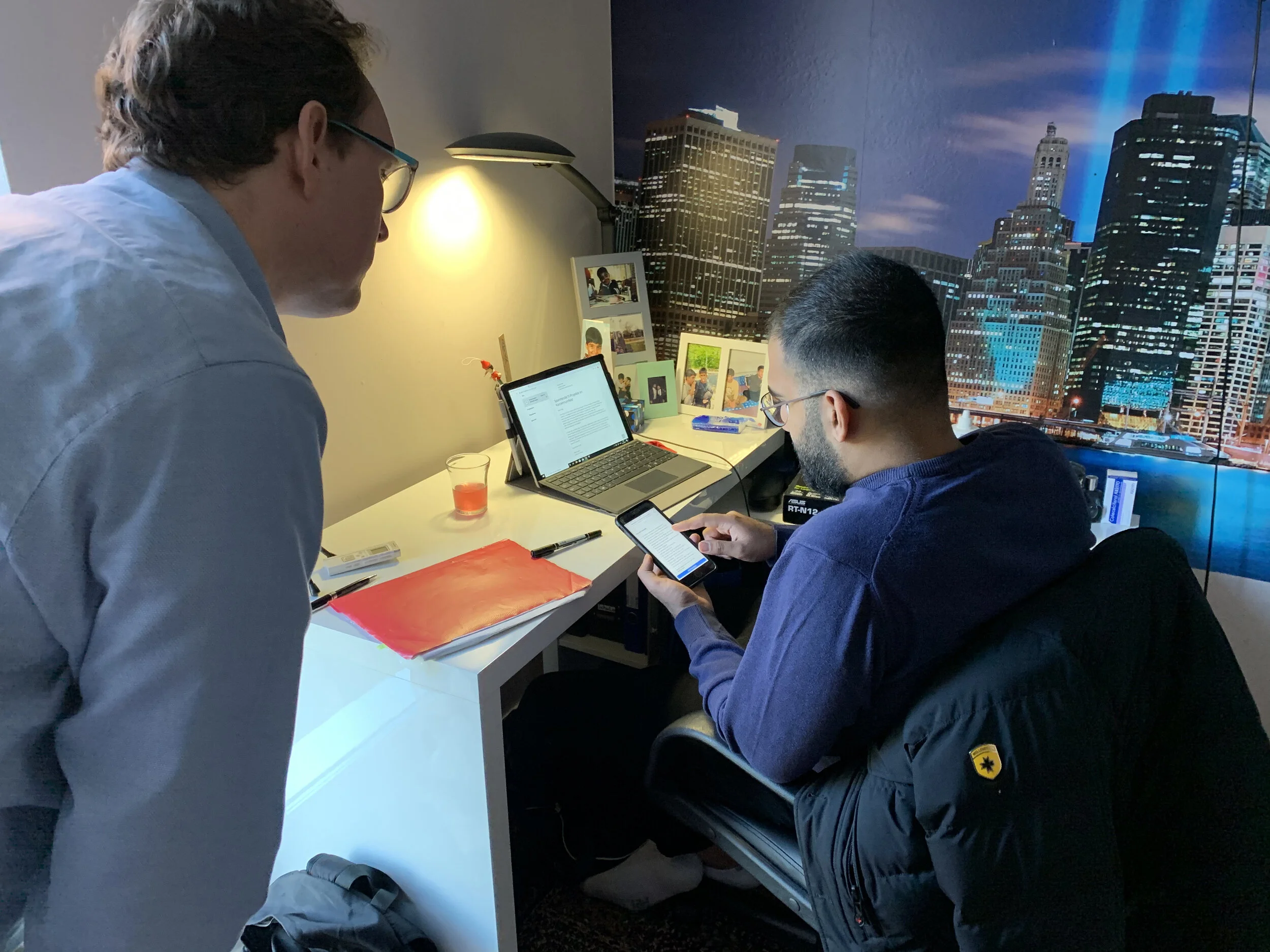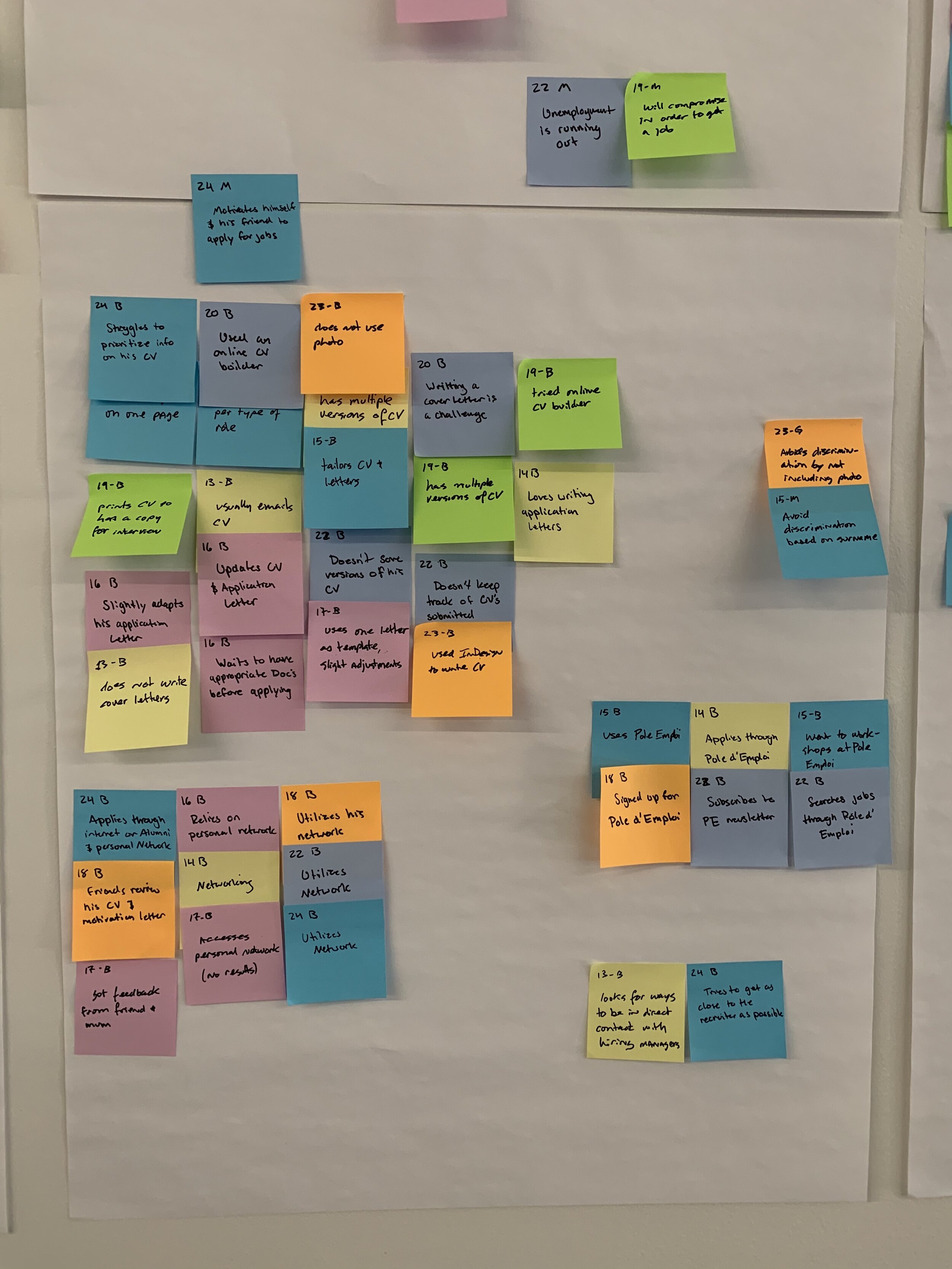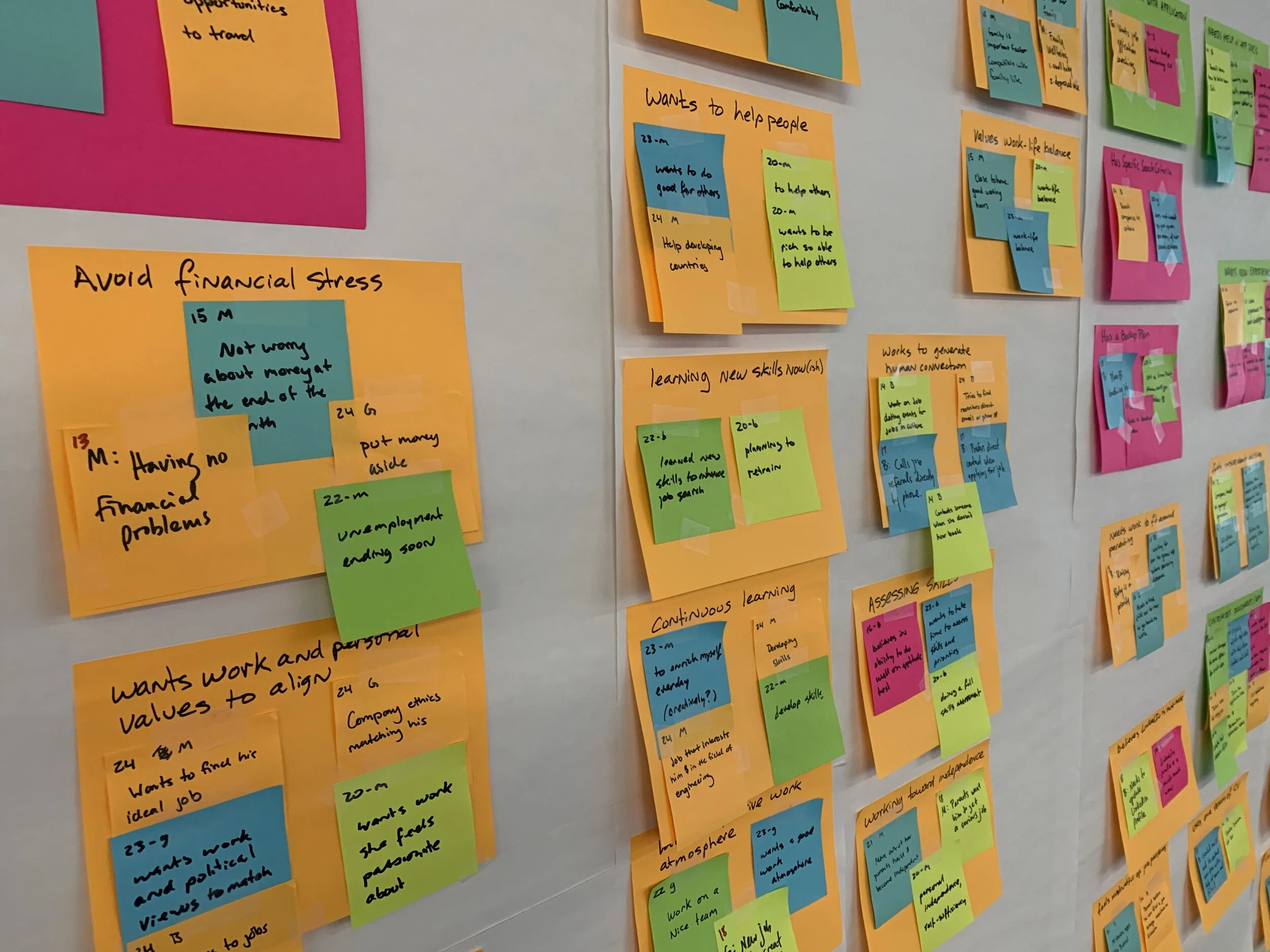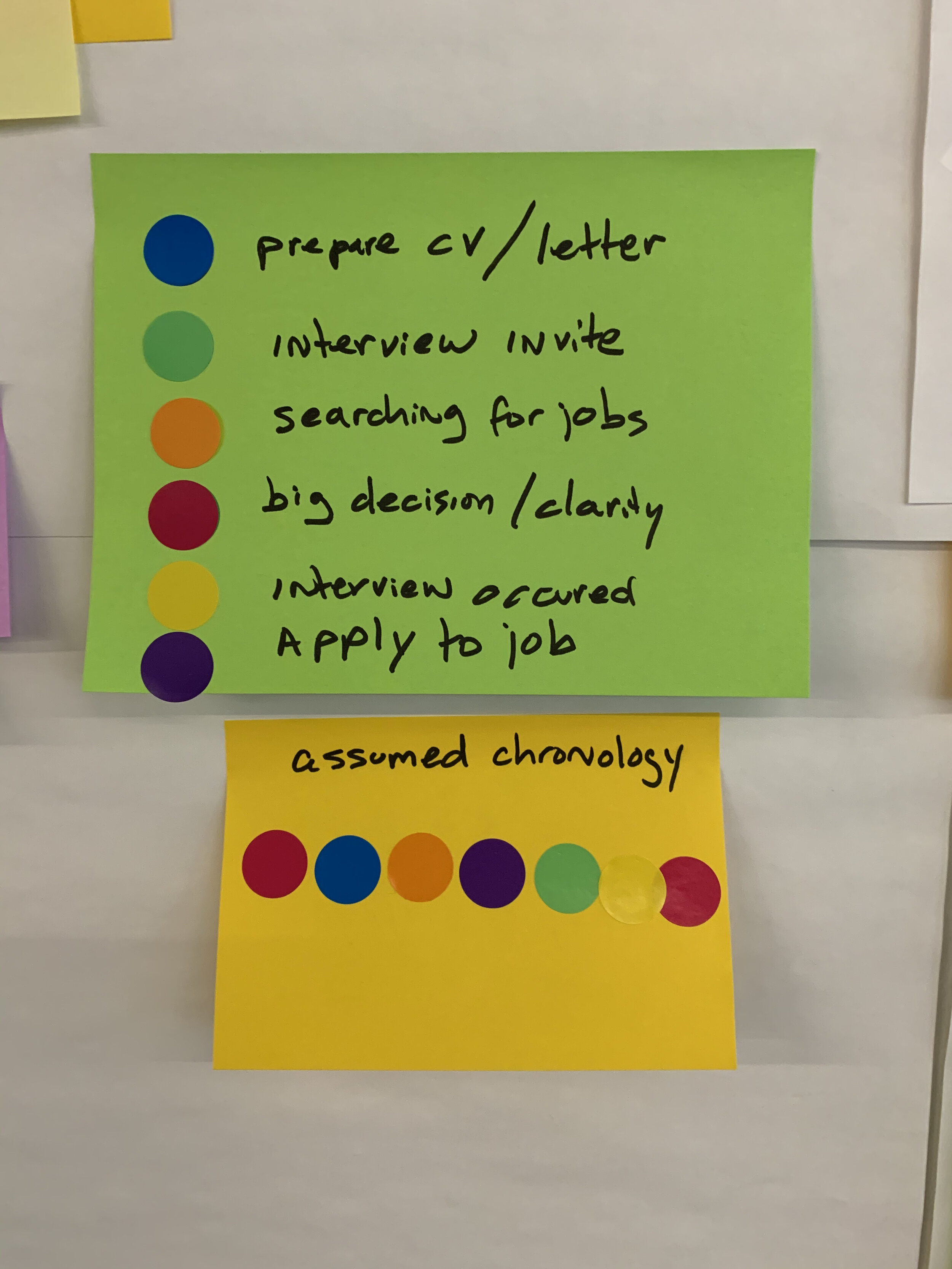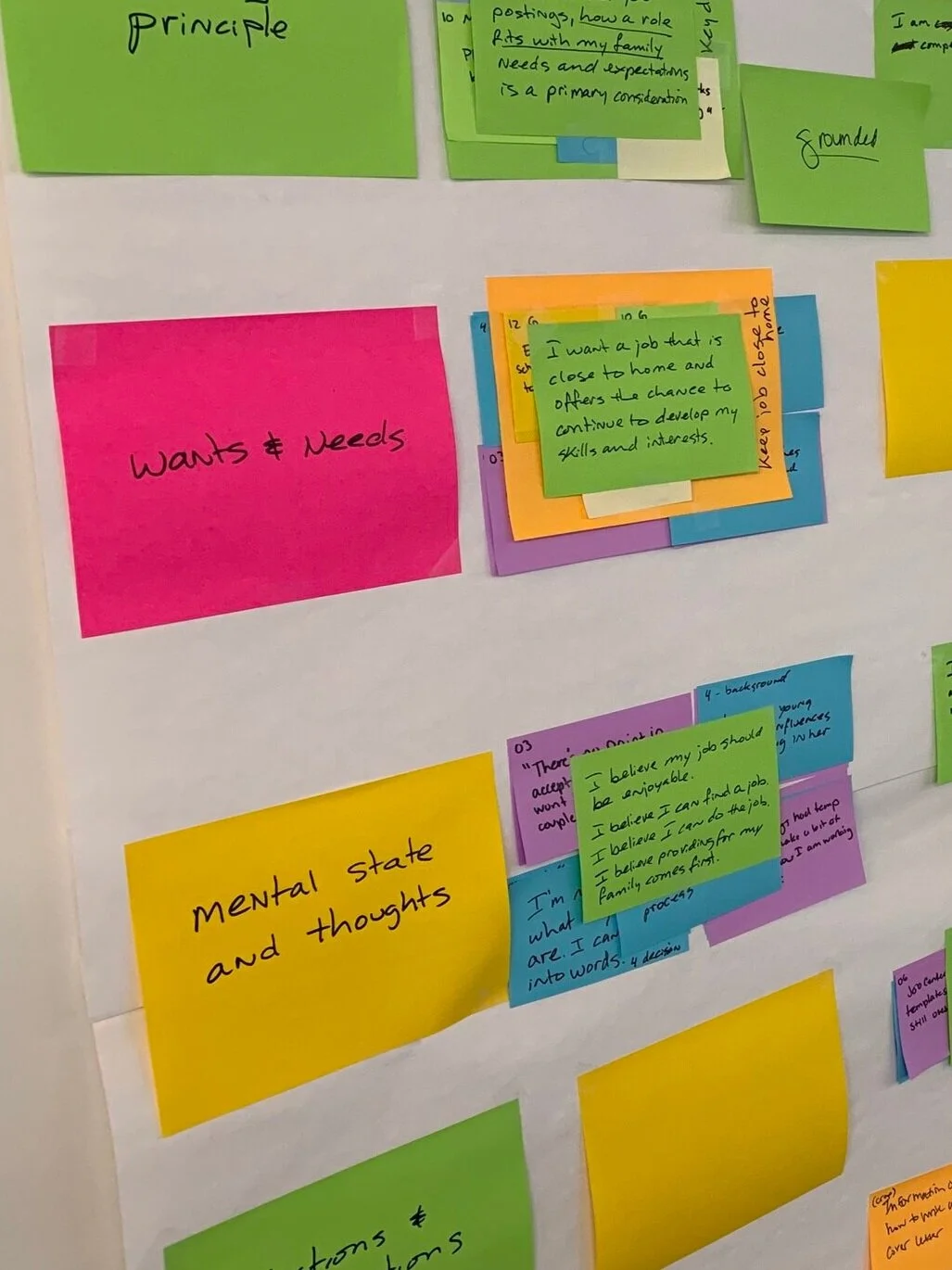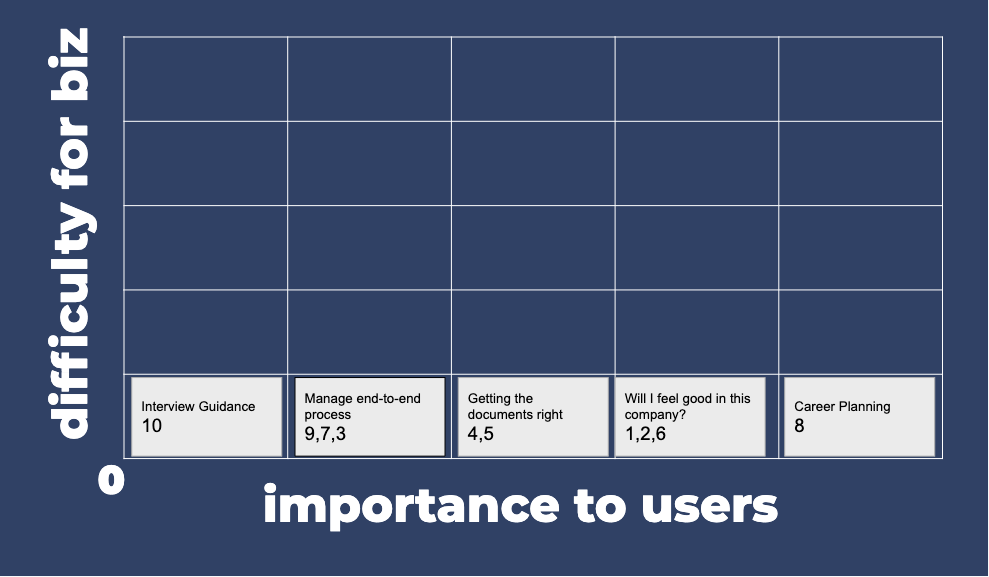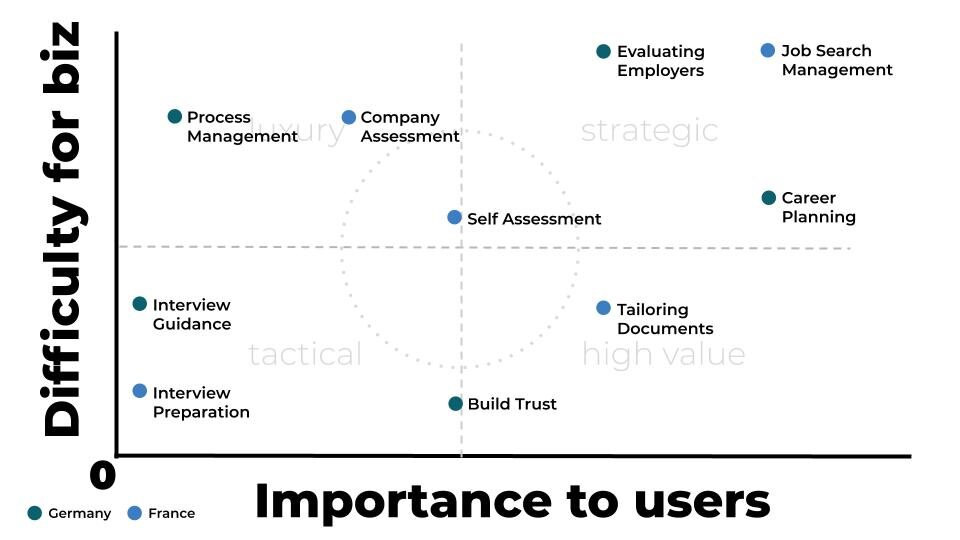EU Foundational research
The Project
GOAL
Talk to people in France and Germany to better understand their job search experience
What did we do?
5 Weeks
2 Countries
Germany
Berlin
Hamburg
France
Lyon
Paris
30 In-person Interviews (Home Visits)
120 min each
6 casual conversations
Research Synthesis
Home Visits
I packed my bags and headed to Europe to participate in home visits with a research partner. Over 5 weeks we conducted 24 home visits to see how people in Germany and France prepare their documents and search for jobs. Each interview lasted about 2 hours and focused on their current job search process, career goals, decision making, and high and low points of their job search.
Interview Sessions
I got early feedback from stakeholders to get the go-ahead on the concepts before moving into prototyping. I then took the wireframes and created a series of prototypes to do counterbalanced comparative testing.
Check out one of the prototypes I created with a few different interaction models I tested. Because we tested targeted flows I only made the interactions work for the Header and Work History sections of the resume.
Casual Conversations
Interviews locals to learn their experiences.
Product walkthroughs.
Send out weekly reports to org.
Develop hypothesis & insights to investigate.
What we learned:
Trust & transparency are important to Germans.
Most people keep work and life separate.
Alternative tools such as Xing.de or Gulp.de
Many people have English CV’s.
Debrief Workshop
The Workshop experience
Research Synthesis
Initial Report
After the debrief workshop, the agency we partnered with gave us a report they had written based on the interviews that were conducted, the debrief workshop and their own personal knowledge. The report was dense and didn’t give much direction as to what to do with it. The information in the report was valuable it didn’t help with the next steps. So we decided to go back into the data and look at the profiles of each person that participated in home visits.
A big piece we felt was missing and we wanted to know what motivates these job seekers, what behaviors do they have and what are their overall goals when it comes to job searching?
Example page from the initial report…
Motivation, Behaviors, and Goals
We needed to do a deeper dive into the raw data to better understand what motivates users to take action, what behaviors they have when taking action, and what is the goal of each person as it pertains to their job search. We split up and read through each profile writing out statements that describe a motivation, a behavior, or a goal.
Theme Clustering
After diving into all the profiles and extracting their motivations, behaviors, and goals it was time to start clustering similar ideas to create groups.
Pattern Finding
We realized the groups were a little big, so we broke them up into smaller groups of 3-5 post its. Once we were happy with the groups we created, we wanted to name these groups in 2-3 word statements, starting with an action word. This was important because we were able to look at the group of post its and quickly understand the theme of the group, but also what it means to the participants we interviewed.
Participant Grouping
Find theme clusters that have similar participants.
Assess profiles and groupings… and then discuss.
Identify common Behaviors
Once we all agreed on the groupings we took a look at the user journeys that were written during the interview, to see what the high and low points were, but also identify any patterns.
Develop an Emotional service map
Next was to take those steps in their journeys and create an emotional service map. Finding evidence of their wants and needs, mental states and thoughts, and their actions and reactions we can better understand what job seekers do, and how they feel about it.
We looked at each profile again and wrote down quotes, things they say they wanted or needed, and actions they took at each step in their journey. We then stuck it to the wall under the corresponding step until we had something that started to look like this…
After going through each profile and writing out evidence on post it notes we placed them on the service map and took a step back. We started to see clusters in different areas along the experience. We took those clusters and wanted to summarise the contents of them into simple statements that captured the context of that theme.
Guiding principles
Now that we know their experiences, the actions they take, what they want & need, and their mental state we can look at each step in their journey and try to tease out a guiding principle in which they live their life. This did not necessarily need to be related to their job search, but rather a value in which they use to guide their decisions in life. So we went through each step in the journey and developed a guiding principle so on a deeper level we could understand the core values that guide our user’s decision-making during their job search.
How did we uncover a guiding principle?
We used the data and evidence we had to create an overarching statement that captures the actions, mental state and needs a job seeker has at this point in their search.
Insights
To gather insights we again needed to look at the wants & needs, mental state, and actions job seekers are taking at each step in the journey, but this time we have a better understanding of what guides their decision, through the guiding principle. We looked at each category and asked “what is it those job seekers struggle within this step and how might we help them.” At each step in the journey, we came up with as many “How might we…” statements as we could.
Example of how we developed an insight
*Slide from a presentation the team gave to our organisation about our process for uncovering insights.
Insights Prioritization
Now we had a bunch of insights for each country but we needed a way to prioritize what to focus on, so we created a scale to help. We took the first 10 insights and discussed and narrowed them to 5 insights we felt would be most impactful for the users. Once we all agreed on the 5 insights we organized them by how important (based on what we know) these insights are to the users.
When we were all in agreement on the order of importance to the user, it was time to debate how difficult it would be for the business to implement. Each group came out with something like this.
This was a big step for the team, now that we had actionable insights, and understood where they fall in importance, we can then look at what to work on first. We wanted a way to visualize what was next and how we prioritized it, so we plotted the top insights for each country onto a chart.
The chart was broken into 4 quadrants that consisted of tactical (do it now), high value (do it soon), strategic (do it right), and luxury (do it someday?). This allowed the rest of the organization to understand the prioritization of insights and what we plan to tackle first.


